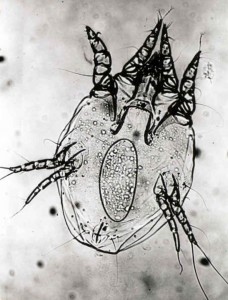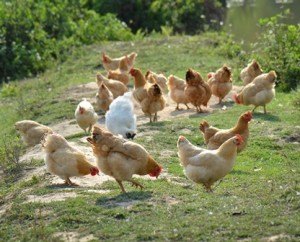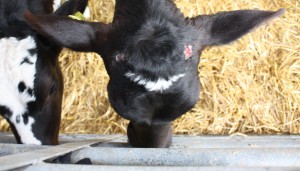Animal Health Planning

The ultimate aim of the animal health plan is to limit health problems so that they can be controlled mainly through prevention.
Farmers can improve the health, welfare and productivity of their animals through animal health planning. Animal Health Planning is a continuous improvement method that encourages the development of health building and disease control measures appropriate to the particular farm circumstances leading to a system that is progressively less dependent on veterinary medicines without jeopardising welfare.
So how do I do this in practice?
A herd health plan should consider the following aspects:
- Background information
- Record keeping and monitoring
- Preventing disease entering
- Disease reduction and control plan
- Promote positive health and natural behavior
- Vaccinations as part of herd health plan
- Mutilations
Background information
Most farm and health plans start by listing some key details about your farm, such as the farm address and key farm personnel and other important farm contacts such as the farm vet and feed suppliers. Also details about your stock, such as numbers, breeds, and age of your herd or flock.
Record keeping and monitoring
In order to effectively reduce both disease and medicine use, it is necessary to understand what the current levels are, and therefore a disease recording and monitoring system needs to be in place. An animal health plan can only be fully operational once the disease recording and monitoring systems has been implemented. The information from these systems allows an accurate analysis of medicine use and the herd or flock status and a plan can be designed taking into account the specific features of each farm. It is important that a local vet is involved in health planning to ensure good understanding of the local disease situation.

Sheep scab is caused by an infection with the Psoroptes ovis mite and is a good example of a disease that can enter a farm from bought in stock as the early stages are often asymptomatic. These mite can survive off host for 16-18 days and can also be introduced into a flock via shared grazing, fences, sharing trailers and from shearing clothes and equipment.
Preventing Disease Entering the herd
Herd Health Security
A herd health security plan highlights all of the likely risk factors concerning the introduction of contagious diseases from outside the herd. Farmers should be aware of which diseases are in the local area and what the risk factors of importing them onto the farm are. Risks can be broadly classed into those concerning:
• The introduction of new or returning animals;
• Contact with other animals via shared resources with other farms and animals, such as shared grazing, water courses;
• Introducing disease via humans or equipment entering a farm.
For more information on biosecurity and measures that can be put in place on your farm click here.
Closed herd/flock policy
A genuine closed herd/flock is one where no animals are brought in even on a temporary basis (e.g., a rented bull, show animals). If breeding animals or show animals are likely to be bought occasionally, a biosecurity policy for such occasions should be established identifying the quarantine and isolation measure for sick and bought-in stock. See Biosecurity page for more information to encourage .
Disease Reduction and Control Plan
The plan should consider each identified disease or syndrome, and establish ways in which the potential or identified risk factors can be reduced or eliminated. The plan should start with those diseases that have been identified as the main problems on the farm as a result of the monitoring process. New diseases and conditions can be added to the plan as time and herdsman motivation allow.
Vaccinations in Health Planning
The animal health plan should list the currently used vaccines and immunization procedures and the reasons for each vaccine use. If it is intended to reduce the vaccine usage on the farm, a clear plan of action should be established. This plan should take into consideration the local risk factors and include alternatives to immunological protection (herd health security, eradication/monitoring plan etc.).
Promoting positive health and natural behaviour
A health plan that incorporates the “positive health” approach would need to concentrate on health rather than disease diagnosis, identification of risk factors and disease avoidance. Definitions of health, as applied to human health by the World Health Organization (2007), encompass physical, mental and social well-being and not merely the absence of disease or infirmity. Health planning has been described as an effort to promote the general health of the individual or the herd by actively improving it living conditions in two ways:
- Through breeding to select animals well suited to individual farm conditions
- Through the provision of access to species-specific feed, housing and the freedom to express natural behaviour (Hovi et al (2004) in Vaarst et al (2004))
Be SMART!
Ensure your plan is Specific, Measurable, Achievable, Relevant and Time-based
Setting SMART targets is one of the best ways of agreeing and achieving health planning objectives.
SPECIFIC – use actual measures and observations to set targets e.g. “I want to reduce pneumonia incidence in my calves to less than five cases a year”
MEASURABLE – Again, ensure you can measure changes e.g. “I currently have 15 cases a year”
ACHIEVABLE – Ensure that the targets and objectives are realistic, gradual and not overly ambitious e.g. “I will consult my vet, adapt my buildings and use appropriate vaccines”
RELEVANT – use objectives that will give you benefit e.g. “This will increase my productivity by an estimated 15%”
TIME-BASED – Ensure the time periods are realistic and achievable e.g. “I want to do this within 12 months”
Mutilations
There are certain mutilations, such as dehorning or disbudding of young animals and castration of young males are deemed acceptable for reasons of safety. Given that these procedures can cause considerable discomfort and distress, they should be conducted in full compliance of animal welfare legislation and the health plan should specify procedures aimed at reducing the negative impacts with regard to pain and suffering. The plan should also specify who carries out the operation (what training/supervision given) and how the operation is carried out.
Health Plan Templates
Full use of commercial herd health schemes should be made where applicable (for example, PCHS or Herdcare.
A series of health plan templates for different livestock can be found on the Animal Welfare Approved website here: Farm-Health-Plans-A-Practical-Guide-v1-updated.pdf


 British English
British English



Comments are closed.